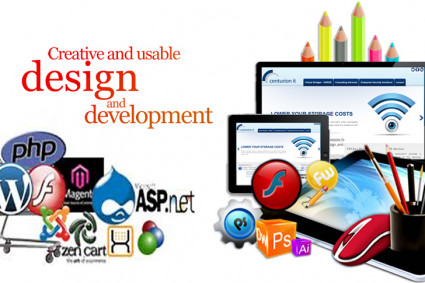
Introduction: A New Paradigm for Software Engineering
The life cycle of software development has long been characterized by human imagination, rational thinking, and iterative improvement. But the rise of generative artificial intelligence (AI) has opened a new page with a fusion of human imagination and machine intelligence. Generative AI systems like OpenAI Codex, Google Gemini, and Meta's Code Llama are not merely automating routine coding work; they're transforming the way applications are developed, tested, and serviced.
By 2025, generative AI will reshape the software development environment from a methodology-focused discipline into an ideation-to-delivery collaborative innovation cycle connecting idea to reality quicker than ever.
1. Speeding Up Code Generation and Prototyping
Generative AI models with training on billions of pieces of code now write functions, propose syntax, and even correct programs automatically. GitHub Copilot and Amazon CodeWhisperer are revolutionizing developer productivity by providing context-based suggestions that are in line with best practices.
Developers no longer begin with a blank editor; they work alongside AI systems that predict intent, speed experimentation, and prevent human error. With boilerplate code automated, engineers can concentrate on higher-level design and problem-solving, reducing early-stage development time by as much as 40–50% in enterprise settings. The change doesn't only increase speed; it enhances creativity, enabling teams to experiment with new architectures and ideas in hours instead of weeks.
2. Redefining Software Testing and Quality Assurance
Software testing, previously a labor-intensive process, is being transformed by generative AI. Smart agents can now be used to generate, run, and optimize test cases on multiple platforms automatically.
For instance, systems powered by AI can create test data that reflects actual usage patterns, providing more comprehensive coverage and fewer post-release bugs. Predictive analytics models also assist in determining latent vulnerabilities before they appear in production.
Aside from automating, generative models learn from each iteration, enhancing their capacity for anomaly detection, creating realistic input data, and even describing test failures in natural language. Such adaptability establishes an ongoing quality feedback loop, significantly enhancing software reliability.
3. Revitalizing Debugging and Maintenance
Debugging used to be one of the most time-consuming activities in development. Generative AI is turning that on its head. Through analysis of repositories, logs, and runtime data, AI can now identify the source of errors, suggest remedies, and rewrite code blocks in real time.
More sophisticated implementations take this one step further, using generative reasoning to predict the impact of code changes on system behavior. This forward-looking ability is eliminating technical debt while allowing legacy systems to modernize elegantly, together with new technologies.
For large enterprises, this shift translates into reduced maintenance expenses, accelerated release cycles, and more consistent software performance in distributed systems.
4. Intelligent Documentation and Knowledge Sharing
Documentation often neglected during software delivery is experiencing a renaissance thanks to generative AI. Models like GPT and Claude can automatically generate, update, and maintain technical documentation, ensuring that developers and stakeholders always have access to current information.
AI is able to translate commit history and comments into natural language summaries, facilitating easier onboarding of new team members. It is also able to summarize architectural changes, identify inconsistencies between implementation and design documents, and even produce visual workflow diagrams.
Such intelligence not only facilitates collaboration but also facilitates institutional knowledge retention, particularly in hybrid and remote development contexts.
5. Redefining Software Architecture and Design Thinking
Generative AI doesn't simply write code; it builds systems. Through architectural learning and constraint-based reasoning, AI platforms can now suggest software architectures optimized for scalability, performance, and security.
For instance, AI can model how various frameworks (React, Vue, or Angular) would handle particular workloads, or how backend microservices should be organized for minimum latency and fault tolerance.
With businesses embracing AI more deeply in their architecture design practices, the function of engineers is slowly transforming from "builders" to strategic decision-makers who oversee, verify, and iterate AI-driven proposals. This integration of human creativity and machine optimization results in robust, future-proof systems.
6. Citizen Developers and Democratization of Innovation
No-code and low-code platforms are now augmented with generative AI features that allow non-technical experts to develop advanced applications. Users can now develop dashboards, workflows, and APIs by defining desired behavior in simple terms without needing deep coding skills.
This development democratization enables enterprises to innovate at scale, minimize reliance on expert engineering teams, and preserve governance through centralized AI monitoring.
The rise of citizen developers backed by AI not only increases the pool of talent but also encourages cross-functional teamwork—where technical possibility meets creativity.
7. Security and Ethical Concerns
Although the advantages of generative AI in programming are significant, the technology presents new challenges. Code produced by AI may inherit bias, security vulnerabilities, or licensing issues from its training data. Thus, human intervention is still essential in verifying AI outputs, particularly in mission-critical and regulated environments.
Organizations are now implementing AI governance frameworks to make sure that automated systems comply with security protocols, intellectual property rights, and ethical coding guidelines. Embedding explainable AI (XAI) mechanisms in development processes will assist teams in keeping transparency and accountability in AI-based decisions.
8. The Future: Autonomous Development Environments
The future of software development is pointed toward self-driving development platforms, where generative models manage end-to-end project lifecycles. Picture systems that can read business requirements, code, deploy, and measure performance are adaptive in real-time based on user feedback.
This is not science fiction; it's the future of AI-native development. Through the combination of multi-agent systems, generative models will eventually work in tandem autonomously: one writing code, one testing, and one optimizing deployment.
The coalescence of these systems holds the promise for a future where human developers are orchestrators of smart pipelines, guiding innovation rather than performing every detail by hand.
9. Combining Generative AI for Competitive Advantage
Embracing generative AI isn't merely a technical improvement; it's a strategic decision. Companies that invest in the proper tools, data infrastructure, and training pipelines can unlock unheard-of speed and imagination.
Forward-thinking organizations are partnering with Experienced generative AI solutions providers to ensure seamless integration, scalability, and compliance across teams and regions.
By aligning AI capabilities with business objectives, these companies are creating new standards for digital transformation, shifting from reactive creation to proactive innovation.
Conclusion: The Human–AI Partnership
Generative AI is revolutionizing software development not by displacing developers, but by unlocking their potential. The future of developers will involve coding less and creating more, concentrating on logic, design, and ethical supervision.
As 2025 progresses, AI will increasingly transform each stage of software development, from ideation to deployment. The companies that thrive will be those that thoughtfully adopt this transition, harmonizing automation with imagination, and velocity with accountability.
Generative AI is not merely a tool; it's a creative partner that's transforming the future of software development, line of code by line of code.





